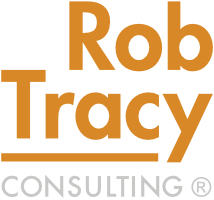Most companies strive to develop talent organically. But practically, there will be times you need to recruit specific, elite-level leaders to strengthen your team and add depth. Even seasoned leaders will require a proper onboarding and professional development strategy to be most effective for the short and long term.
This article summarizes four specific ways to ensure this process is smooth for both the new leader and the hiring company.
1) Write a structured onboarding plan.
A formal, written guideline for approaching each new leader’s first ninety days with your company creates accountability for all stakeholders and the new leader.
Here are some items to consider with your written plan:
- All new leaders must have a fully-functional work-station on day one.
Years ago, my company hired a project engineer, but the process of getting him his PC equipment, software, and system access took nearly three weeks. This increased his onboarding time considerably.
- Provide the new leader with a written summary that gives a layout of company history, strategic market review, and organization chart
- Introduce the new leader to other key company stakeholders during the first week that they are onsite
- Illuminate key training milestones that the new leader will take part in, such as ERP/MRP/CRM systems review and production planning system overview
The sooner that a new leader understands the company’s mission and core values and has full system access, the sooner they can start driving company success.
2) Schedule consistent coaching sessions right out of the gate.
The most effective development plans always give the new leader consistent, direct access to their manager. These “one-on-one” sessions are important for two reasons; first, they ensure that the new leader has a chance to connect regularly during their initial learning phase; and secondly, they create a sense of camaraderie between the manager and the new leader. Don’t miss this opportunity right out of the gate.
3) Foster engagement through targeted industry groups.
Industry peer groups are powerful. When a company creates a pathway for new leaders to create these partnerships, it sends a strong message to that leader. The leader will build confidence and strengthen industry connections through best practices discussions and meeting other industry experts.
4) Establish a formal professional development plan that creates accountability and visibility.
Towards the end of the first ninety days, create a written development plan for the new leader. This plan should establish milestones, formalize ongoing coaching sessions with the manager, and track the completion of goals along the development path. Keep it simple and use it as a reference during established check-in intervals. If it is written down, it becomes far more likely to be a guidepost for ensuring consistent improvement.
If you practice these four steps consistently with your new leaders, you will have engaged leaders who do not spend their time talking with other recruiters. Start the journey now. Create your own leadership destiny proactively – do not leave it up to chance!
About the author
Nic has spent the majority of his career working as an Operations leader in the custom metals fabrication and precision machining industry. Nic currently owns a manufacturing-specific recruiting and consulting company, where he continues to help advance small to mid-size manufacturing businesses to be industry leaders in their market.
